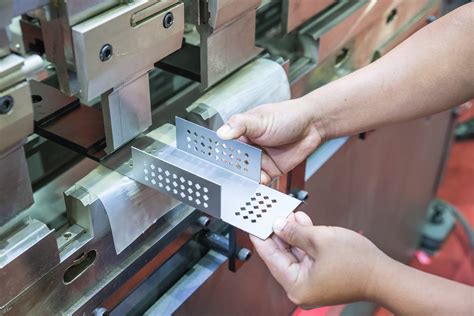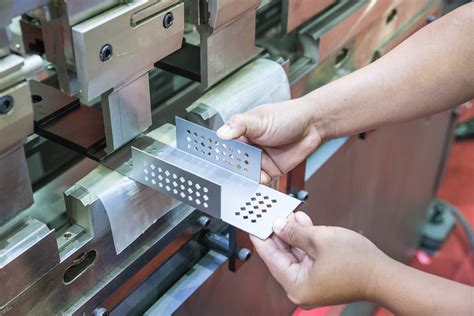application of sheet metal process Sheet metal is metal that has been formed into thin, flat pieces, usually through an industrial process. It is generally produced in sheets less than 6 mm thick. Sheet metal is one of the fundamental forms used in . $79.99
0 · types of sheet metal forming
1 · types of sheet metal fabrication
2 · sheet metal raw material
3 · material used in sheet metal
4 · disadvantages of sheet metal
5 · applications of sheet metals forming
6 · applications of sheet metal work
7 · applications of sheet metal operations
$13.90
types of sheet metal forming
framing a tiny house with metal studs
The process involves the sheet metal being placed over a die, then pressed with a punch into an open cavity, causing the material to undergo plastic deformation. The process allows for precisely made complex shapes . Sheet metal processing is a vast concept, covering several machining operations done to metal sheets. Since the topic is too broad, most people think the overall process only boils down to a single function. However, . Sheet metal is metal that has been formed into thin, flat pieces, usually through an industrial process. It is generally produced in sheets less than 6 mm thick. Sheet metal is one of the fundamental forms used in . Sheet metal fabrication involves cutting, bending, and shaping metal sheets to create components and structures for diverse applications.
Discover the transformative technologies and methodologies in sheet metal manufacturing revolutionizing industrial production. Delve into precision techniques, advanced quality control methods, applications, and .
At its core, sheet metal fabrication involves transforming flat sheets of metal into specific shapes and forms through cutting, bending, and assembling techniques. Materials commonly used include stainless steel, aluminum, brass, copper, . In this article, we will cover the basics of sheet metal fabrication. We aim to shed light on this metal production technique with numerous applications across many industries. Application of sheet metal processing. Since sheet metal processing has a series of advantages such as high production efficiency, stable quality, low cost and the ability to process complex-shaped workpieces, it is widely used in such industries as machinery, automobiles, aircraft, light industry, national defense, electrical appliances, household appliances and daily . Sheet metal fabrication is the process of forming metal sheets to the desired shape using different manufacturing methods. The completion of a product usually comprises of many steps – from cutting and bending to surface treatment and assembling.
The process involves the sheet metal being placed over a die, then pressed with a punch into an open cavity, causing the material to undergo plastic deformation. The process allows for precisely made complex shapes and designs with deeper features.
The process of producing sheet metal components using metal sheets is known as sheet metal forming or sheet metal fabrication. This is accomplished by bending, punching, shearing, hydroforming, and other techniques to form . Sheet metal processing is a vast concept, covering several machining operations done to metal sheets. Since the topic is too broad, most people think the overall process only boils down to a single function. However, there are two categories of . Sheet metal is metal that has been formed into thin, flat pieces, usually through an industrial process. It is generally produced in sheets less than 6 mm thick. Sheet metal is one of the fundamental forms used in metalworking, and it .
types of sheet metal fabrication
Sheet metal fabrication involves cutting, bending, and shaping metal sheets to create components and structures for diverse applications. Discover the transformative technologies and methodologies in sheet metal manufacturing revolutionizing industrial production. Delve into precision techniques, advanced quality control methods, applications, and emerging trends driving efficiency and innovation.At its core, sheet metal fabrication involves transforming flat sheets of metal into specific shapes and forms through cutting, bending, and assembling techniques. Materials commonly used include stainless steel, aluminum, brass, copper, and various alloys. In this article, we will cover the basics of sheet metal fabrication. We aim to shed light on this metal production technique with numerous applications across many industries.
Application of sheet metal processing. Since sheet metal processing has a series of advantages such as high production efficiency, stable quality, low cost and the ability to process complex-shaped workpieces, it is widely used in such industries as machinery, automobiles, aircraft, light industry, national defense, electrical appliances, household appliances and daily .
Sheet metal fabrication is the process of forming metal sheets to the desired shape using different manufacturing methods. The completion of a product usually comprises of many steps – from cutting and bending to surface treatment and assembling. The process involves the sheet metal being placed over a die, then pressed with a punch into an open cavity, causing the material to undergo plastic deformation. The process allows for precisely made complex shapes and designs with deeper features.
The process of producing sheet metal components using metal sheets is known as sheet metal forming or sheet metal fabrication. This is accomplished by bending, punching, shearing, hydroforming, and other techniques to form . Sheet metal processing is a vast concept, covering several machining operations done to metal sheets. Since the topic is too broad, most people think the overall process only boils down to a single function. However, there are two categories of . Sheet metal is metal that has been formed into thin, flat pieces, usually through an industrial process. It is generally produced in sheets less than 6 mm thick. Sheet metal is one of the fundamental forms used in metalworking, and it . Sheet metal fabrication involves cutting, bending, and shaping metal sheets to create components and structures for diverse applications.
Discover the transformative technologies and methodologies in sheet metal manufacturing revolutionizing industrial production. Delve into precision techniques, advanced quality control methods, applications, and emerging trends driving efficiency and innovation.At its core, sheet metal fabrication involves transforming flat sheets of metal into specific shapes and forms through cutting, bending, and assembling techniques. Materials commonly used include stainless steel, aluminum, brass, copper, and various alloys.


Carlon is a premium brand of ABB in the United States for nonmetallic boxes and covers. To find out which of these products are CSA approved and applicable for use in the Canadian electrical industry, please contact your local sales team.
application of sheet metal process|material used in sheet metal